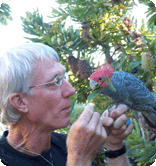Proper Housing for a Pet Parrot

Hello. I’m asking this question for my friend who has a Timneh and a cockatiel. She has to live with her 84 yr old mother whom is recovering from a fall. Right now she has the birds in the guest room, but wants to put them in the living room so they can be where the action is in the household. However, there’s a gas fireplace in the living room. (The living room, dining, and kitchen all share the same open space.) The fireplace is vented to the outside and there’s a working carbon monoxide alarm near it. Do you think it would be safe for the health of the birds?
Thank you, Cindi

Cindi, It appears that your friend has installed safety precautions and that the fireplace is bird safe. But there are other considerations about putting parrots “where the action is” as you state it….
Will they be able to sleep comfortably and in quiet once the sun goes down and their natural day is ended, or will they be kept up by noise and humans and television, etc.?
A vented fireplace is usually free of toxic fumes, but that does not mean the air in the living room is always perfect for small psittacine lungs. Fires burn oxygen and unless there is a fresh air window open and proper ventilation, carbon dioxide can rise indoors in the winter. While humans would perhaps not notice such stale air, over several months it could be more troublesome for birds.
It might be a good idea to keep the parrots’ sleeping and feeding cages in the guest room, but to provide play stands and areas in the living room where they can frequent and visit and interact with their humans. This also has the advantage of changing the monotony of always keeping the birds in the same cage spaces, expanding their lifestyle if you will.
As an aside, another need for our pet birds in the winter is to have at least two hour three hours of direct sunlight each week. This means sun through a screen but not a window glass since that blocks some of the beneficial rays. Sunny afternoons can be used in small carry cages where parrot are given some shade with a towel or such on their cage while being able to move out into direct sun for health reasons. By and large, the brighter the room, the better for the birds in the winter as long as it does not overheat or make them feel unprotected.
Good luck,
EB

































